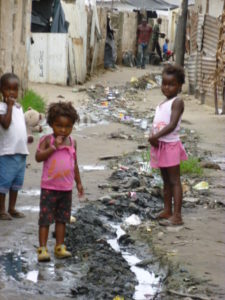The Ecotopia 2121 Project
The Ecotopia 2121 Project sets out to represent 100 cities throughout the world as they would appear in the year 2121 — if they’ve managed to survive and become super eco-friendly.
Over three years of research, fieldwork, seminars, travel, discussion, theorizing, writing, and drawing — a compendium of 100 illustrated stories was assembled together about how 100 cities from around the world can transform into Green Utopias by the year 2121AD. The 100 selected cities include famous places like London, New York and Paris but also some faraway places you’ve probably never heard of. Also included are mysterious cities like El Dorado, Timbuktoo, Xanadu and Shangri La — which may sound like fantasy and fiction but, actually, they’re all real cities.
Go to: http://www.ecotopia2121.com/
Housing In Dublin In Sixty Four 1964

Sixty Four: Woman speaking to John O’Donoghue about her move from Dublin city centre to new housing in Finglas.
How do current living and housing conditions in Dublin compare with 1964? The RTÉ television series ‘Sixty Four’ broadcast a report on the housing situation in Ireland’s capital city.
How do current living and housing conditions in Dublin compare with 50 years ago? In 1964 RTÉ television series ‘Sixty Four’ broadcast a report on the housing situation in Ireland’s capital city.
In this clip from the programme John O’Donoghue looks at the history of Georgian Dublin. By 1964 many of the Georgian buildings in Dublin city centre, which were built in the 18th century, were falling down, being demolished or both. O’Donoghue remarks “Once the proud townhouses and residences of the wealthy, the decorated ceilings are now falling down.”
Many of the landlords of these Georgian buildings claim that the tenants themselves have deliberately damaged the properties in order to get them condemned and moved out to new corporation housing estates in the suburbs.
Go to: http://www.rte.ie/from-georgian-slums-to-the-suburbs-1964/
Mariell Juhlin ~ The Difficult Nature Of Housing
It is truly a tall order to fully understand the contribution of housing to growth, welfare and prosperity among individuals and societies. The field is generally under-researched and under-funded. Where there is research, it is often concentrated on a specific issue within a topical area such as: the link between labour market mobility and housing availability; the effect of poor housing on individual health outcomes, or the macro-economic risk of increased household indebtedness.
Rarely does housing research capture, or attempt to capture, the full socio-economic and dynamic effects of housing on individuals and society. Still, housing is affected by, and in turn affects, most other societal areas from architecture to private sector development. An obvious explanation is that housing markets are too complex to be described by unitary market equilibrium models and would require an empirical basis for submarket modelling. This, however, has not been embraced in applied research to any greater extent and, when it’s been done, it has been subject to inconsistency. The likely implication of this is that the effects of a functional, or indeed a dysfunctional, housing market may be both under-estimated and under-valued in literature and policy-research.
Read more: https://www.socialeurope.eu/difficult-nature-housing/#
Martin Gambrill ~ Addressing The Urban Sanitation Crisis: Time For A Radical Shift
A successful city is economically and culturally vibrant, healthy, safe, clean and attractive to business and tourism, and provides quality of life to its citizens. This vision is appealing but remains hard to realize as developing cities have to cope with changing demographics and climate with limited financial and human resources. The sustainable development goals have given a new impetus for cities to be inclusive, safe, resilient and sustainable (SDG11), ensure citizens’ health and wellbeing (SDG3) and secure access to sustainable water and sanitation services (SDG6).
World Toilet Day on November 19th is the opportunity to remind ourselves of a few facts and propose a set of guiding principles for a renewed and revitalized urban sanitation agenda.
Many cities struggle to deal with the most basic municipal task of managing human excreta. Some are effectively “drowning” in human waste. Urban population growth continuously outpaces gains in improved sanitation access and, globally, Only 26% of urban excreta is deemed to be safely managed. The results? Environmental degradation, endemic disease leading to mortality and morbidity, especially among children, poor school attendance and performance, low productivity, constraints on the delivery of essential urban services such as housing, transport, safe water and drainage, and, ultimately, limits on economic growth and urban development. In short,
Read more: https://blogs.worldbank.org/water/addressing-urban-sanitation
How Public Housing Transformed New York City 1935-67 ~ Part One.
Historian Joel Schwartz takes us on a guided tour of New York City before the NYC Housing Authority razed large swaths of run-down neighborhoods to build public housing projects. These arresting photographs of a long-vanished New York City owe their astonishing detail to the 4×5 inch negatives captured by the NYCHA photographers. Photos are from the NYC Housing Authority collection housed at the La Guardia and Wagner Archives.
Part Two: https://youtu.be/kJ62bxhj3iA
Sebastien Miller ~ Time To Take The ‘Urban’ Out of Urban Design?
For a while now I’ve had an issue with both the term and the definition of ‘urban design’. What exactly is it? Compare it to architecture or planning, which are professions that are easy to define and identify, even to a child’s mind. At its most simple level, architects design buildings, while planners design cities. We understand those roles because they have boundaries and actions that give them a clear identity. But not so for urban design.
We can all identify a well-designed space when we see it, but what part of this is due to good contemporary design? Did it come about due to robust planning policies that encouraged a vibrant mix of uses? Was it due to the active participation of community groups? For most projects, it is probably of all the above… and then some more. What we understand to be urban design involves a broad spectrum of disciplines, such as landscape architects, planners, architects, engineers, etc. In addition, there is the involvement of the public, government agencies, and developers. It’s clearly a ‘team effort’ to produce good urban design interventions.
Read more: http://www.sustainablecitiescollective.com/time-take-urban-out-urban-design




